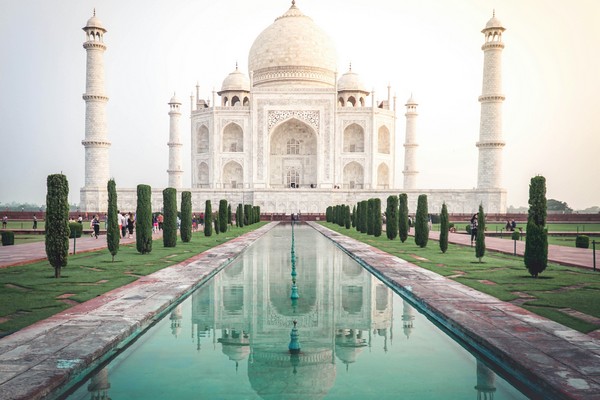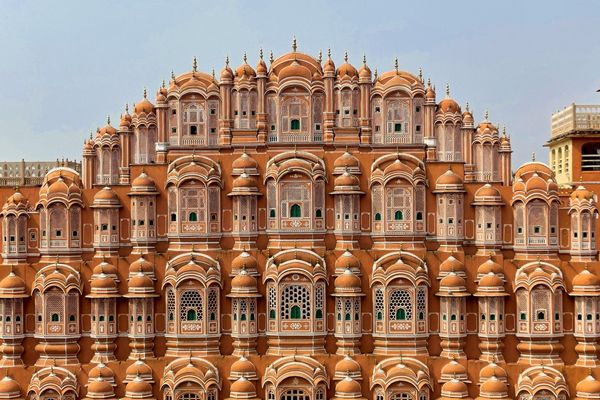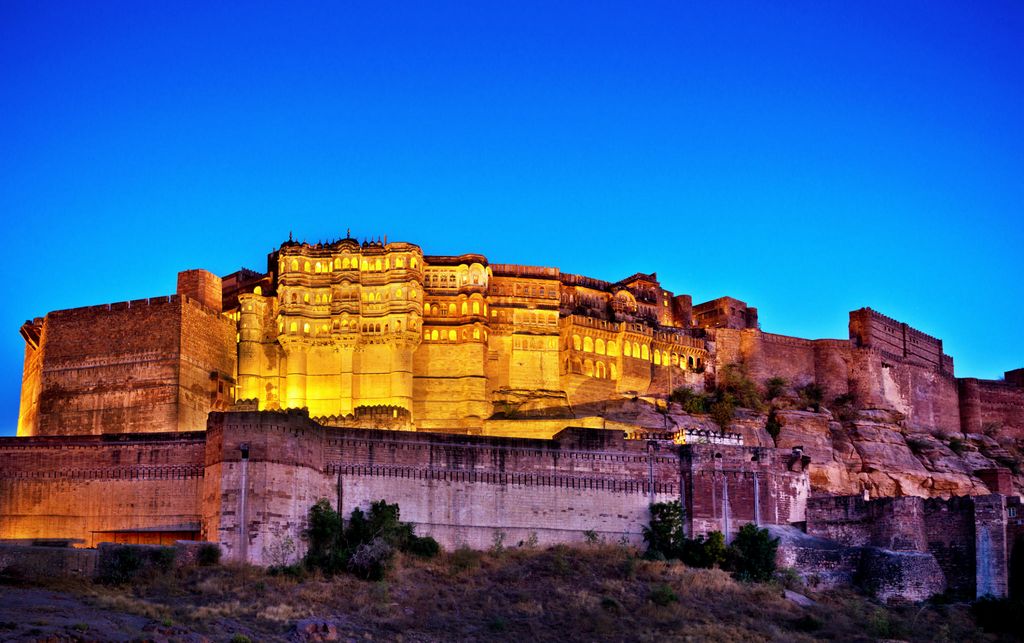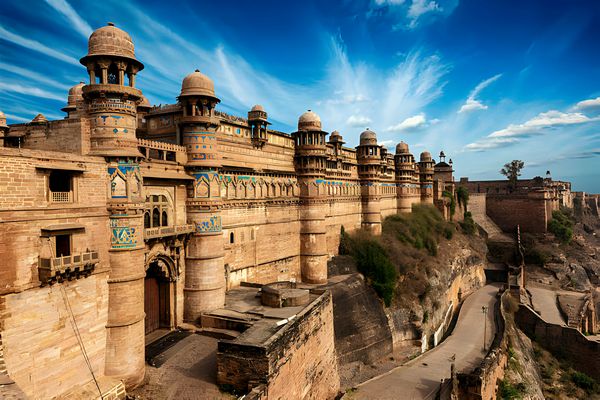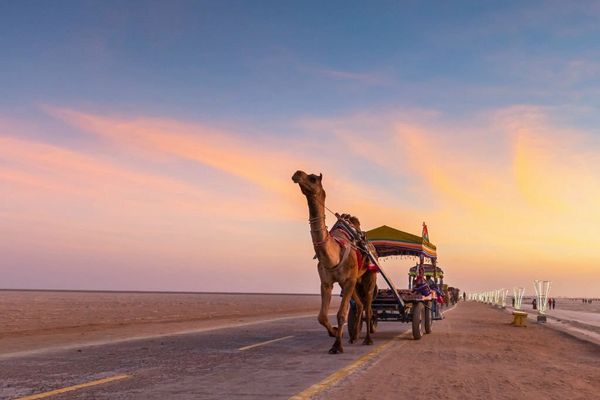VARANASI
Uttar Pradesh, India
About Varanasi
Discover the heart of India’s cultural tapestry in Varanasi, a city that resonates with spirituality and ancient traditions. As you traverse through the labyrinthine alleys, Varanasi unfolds a rich tapestry of religious fervor along the banks of the sacred Ganges. The city, located in the state of Uttar Pradesh, is a must-visit for cultural enthusiasts seeking an immersive experience.
Varanasi epitomizes the soul of Hinduism with its ghats, where pilgrims perform ritualistic ceremonies. Delve into the vibrant local markets, where artisans showcase centuries-old craftsmanship. The kaleidoscopic Ganga Aarti at Dashashwamedh Ghat is a spectacle that encapsulates the city’s spiritual essence.
For an extended cultural tour, explore the nearby city of Agra in Uttar Pradesh, home to the iconic Taj Mahal, a testament to eternal love. Additionally, delve into the royal history of Jaipur in Rajasthan, known for its opulent palaces and vibrant bazaars.
Extend your journey to India’s wilderness with a visit to the renowned Ranthambore National Park in Rajasthan. Experience the thrill of tiger safaris, immerse yourself in nature’s wonders, and witness the diverse avian life. Nature safari enthusiasts can explore India’s bird-watching havens, enhancing the allure of a cultural tour with the mesmerizing beauty of wildlife.
highlights
- Varanasi's Spiritual Sanctum
- Ganges River's Sacred Flow
- Kashi Vishwanath Temple's Divine Aura
- Sarnath's Buddhist Legacy
- Ghats' Ritual Mystique
- Benaras Hindu University's Academic Excellence
- Banarasi Silk's Textile Elegance
- Ramnagar Fort's Historical Resplendence
- Manikarnika Ghat's Cremation Traditions
- Varanasi's Eternal Charm
Places to visit in Varanasi
1. Ghats
Banaras, also known as Varanasi, is a city in India that boasts a rich cultural and spiritual heritage, and its ghats are at the heart of this mystique. The ghats of Banaras are a series of iconic steps leading down to the sacred Ganges River, each with its own unique significance. These ghats serve as multifunctional spaces, where devout Hindus perform daily rituals, pilgrims take holy dips to cleanse their sins, and tourists immerse themselves in the city’s profound spirituality.
The oldest and most famous is the Dashashwamedh Ghat, where the mesmerizing Ganga Aarti takes place every evening. The Assi Ghat, on the other hand, offers a tranquil escape for meditation and yoga enthusiasts. Banaras’ ghats are not just physical landmarks but also spiritual conduits, embodying the eternal flow of life and faith in this ancient and mystical city.
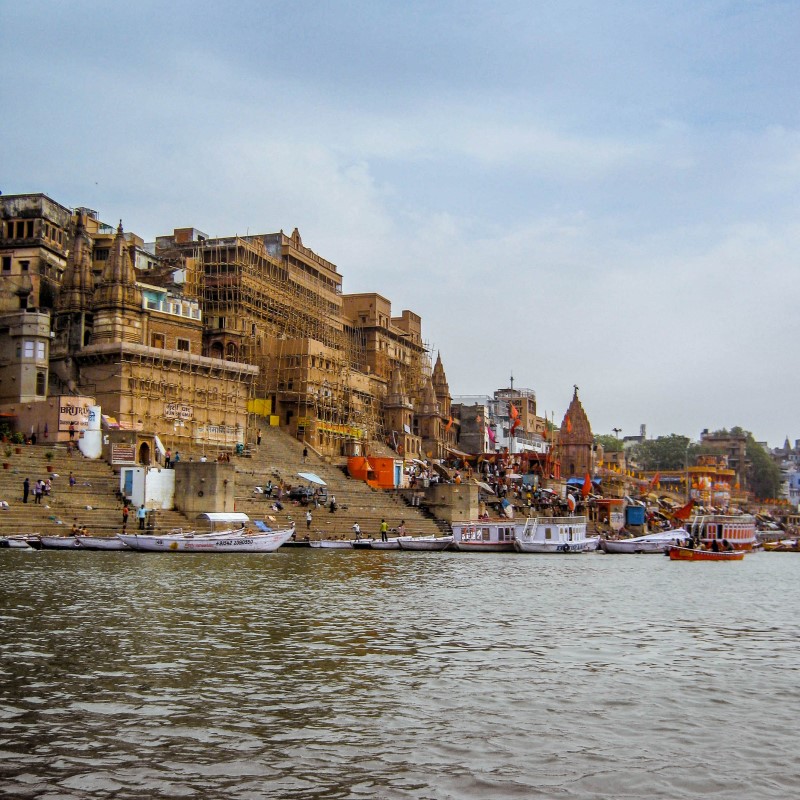
2. Ganga Arti
Banaras, also known as Varanasi, is a city on the banks of the sacred Ganges River in India, renowned for its spiritual significance and cultural heritage. One of the most mesmerizing and spiritually enriching experiences in Banaras is the Ganga Aarti, a daily ritual that takes place at the Dashashwamedh Ghat.
As the sun sets, skilled priests in ornate attire perform a synchronized ceremony, offering prayers and hymns to the river goddess Ganga. Thousands of oil lamps illuminate the evening, creating a breathtaking spectacle. Devotees and tourists gather to witness this ritual, believing that it purifies the soul and connects them with the divine energy of the Ganges, making it a profound and unforgettable spiritual encounter.
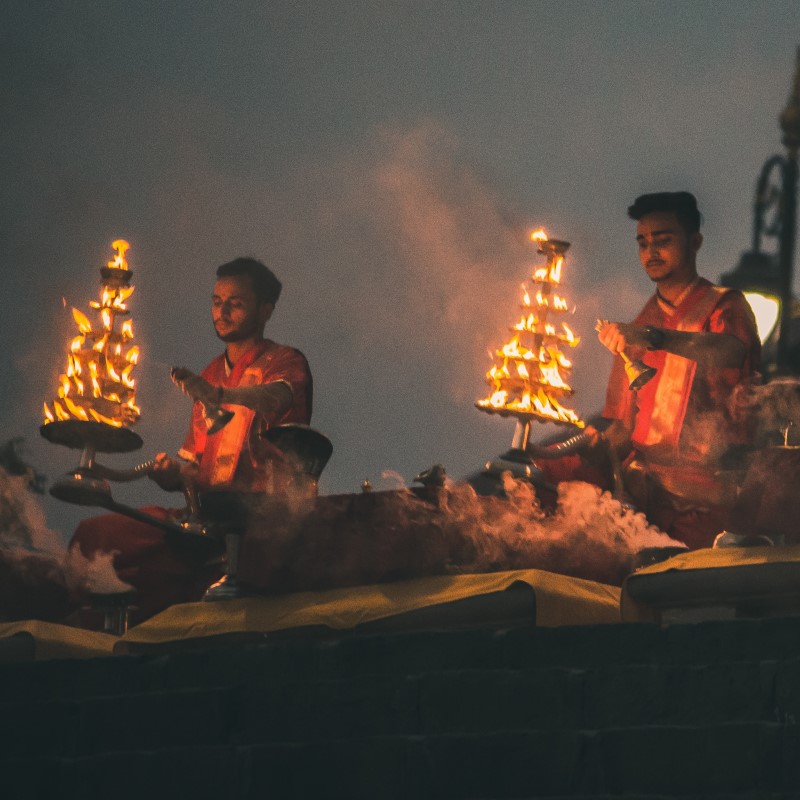
3. Banaras Hindu University
Banaras Hindu University (BHU), located in Varanasi, India, is an iconic institution renowned for its rich history and significant contributions to education, research, and culture. Founded in 1916 by the visionary Pandit Madan Mohan Malaviya, BHU stands as a testament to the fusion of traditional Indian values and modern education.
Spread over a sprawling campus, BHU offers a diverse range of academic disciplines, including arts, sciences, engineering, medicine, and more. It’s known for promoting the study of Sanskrit, fostering a deep connection to Indian heritage.
BHU’s cultural festivals, like the annual cultural extravaganza “Spandan” and the revered “Kashi Hindu Vishwavidyalaya Festival,” celebrate the institution’s cultural vibrancy. BHU’s commitment to academic excellence and cultural preservation continues to make it a respected institution globally.
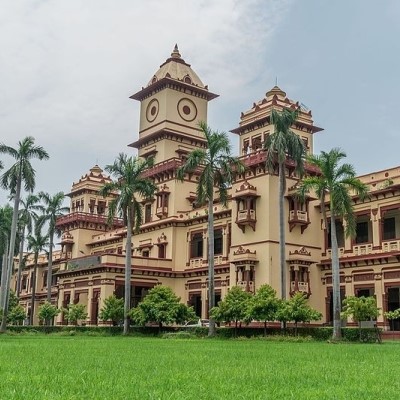
4. Bharat Mata Temple
The Bharat Mata Temple, located in Varanasi, India, is a unique and revered place of worship. Unlike traditional temples dedicated to deities, this temple pays homage to Mother India, symbolizing the nation as a divine mother figure. Established by the nationalist leader Mahatma Gandhi in 1936, it stands as a powerful symbol of patriotism and unity.
The temple’s central figure is a stunning three-dimensional map of undivided India, carved in marble. It showcases the nation’s diverse landscapes, cultures, and historic landmarks. Devotees visit to express their love for the country and seek blessings for its prosperity. The Bharat Mata Temple is not just a religious site but a testament to the deep-rooted respect and devotion Indians have for their motherland.
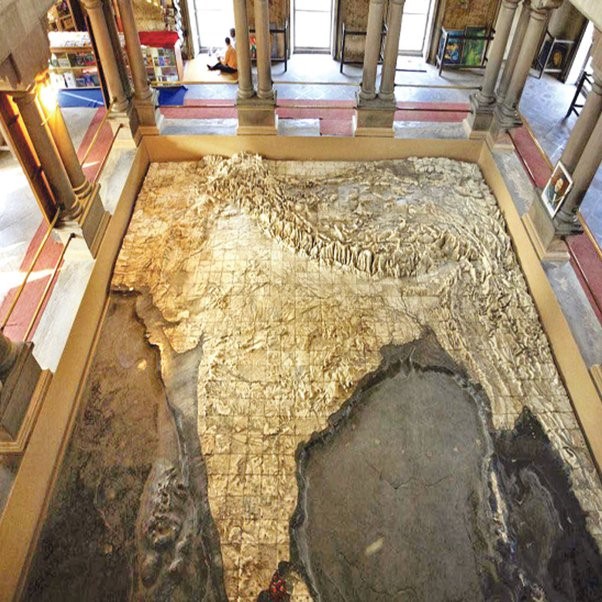
5. Ramnagar Fort
Varanasi’s Ramnagar Fort stands as a majestic testament to the city’s rich history and cultural heritage. Located on the eastern bank of the Ganges River, this historic fortress was constructed in the 18th century by the Maharaja of Varanasi, Balwant Singh. Its architecture showcases a blend of Mughal and Rajput styles, adorned with intricate details and stunning marble balconies.
The fort is not just a symbol of architectural prowess but also houses a museum that offers a captivating journey through Varanasi’s past. Visitors can explore a vast collection of vintage cars, royal artifacts, weaponry, and manuscripts, shedding light on the city’s royal legacy. Additionally, Ramnagar Fort is an integral part of the annual Ram Leela festivities, drawing tourists and locals alike to witness the vibrant reenactment of Lord Rama’s life and adventures. This historic landmark thus serves as a vibrant cultural hub, preserving Varanasi’s traditions and captivating the hearts of all who visit.
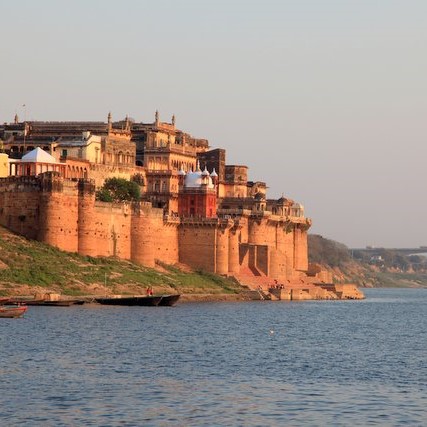
6. Kashi Vishwanath Temple
Varanasi, often referred to as Kashi, is a sacred city in India known for its spiritual significance and cultural richness. At the heart of this ancient city stands the Kashi Vishwanath Temple, a revered Hindu shrine dedicated to Lord Shiva, the destroyer and transformer of the universe.
The temple is a symbol of devotion, drawing millions of pilgrims and tourists from across the globe. It boasts a striking architecture with intricate designs and gold plating that glisten in the sunlight. The temple’s spiritual aura is heightened by the sacred Ganges River flowing nearby.
Devotees visit the Kashi Vishwanath Temple to seek blessings, perform rituals, and witness the mesmerizing Ganga Aarti ceremony, a spectacle that captures the essence of Varanasi’s spiritual soul. This temple is not just a place of worship; it’s a testament to the enduring faith and cultural heritage of Varanasi, making it a must-visit destination for those in search of a profound spiritual experience.
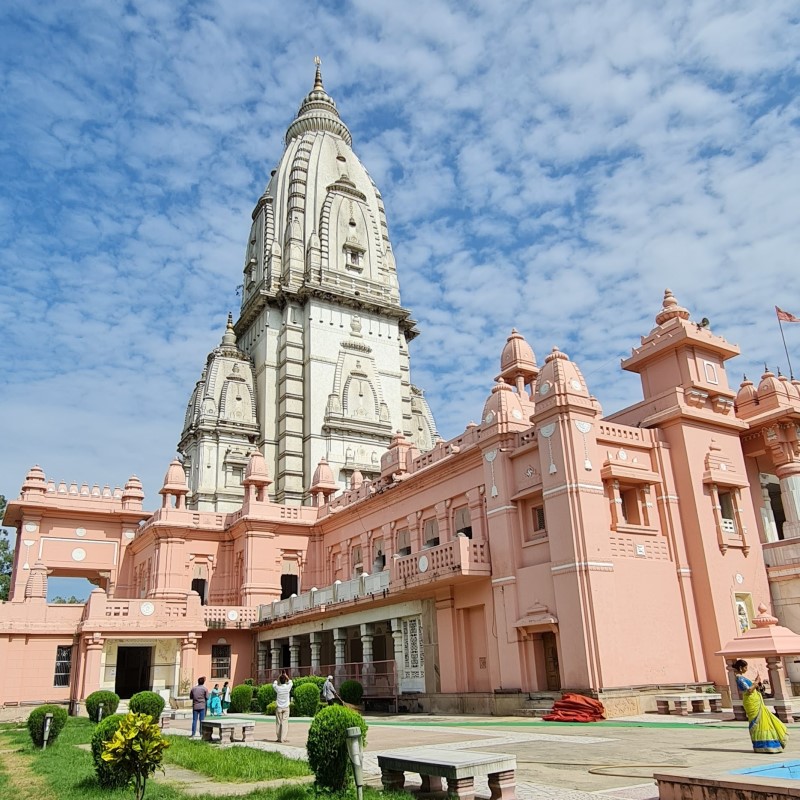
7. Banarsi Saree Weaving
Banarasi sarees, celebrated for their timeless elegance, originate from the ancient city of Varanasi, India. The art of Banarasi saree weaving has been passed down through generations for over 600 years, making it an integral part of the city’s cultural heritage. Skilled artisans meticulously craft these sarees using traditional techniques, including intricate brocades and delicate zari work. The fabrics often feature opulent motifs inspired by nature, mythology, and Mughal architecture.
Banarasi sarees are renowned for their rich, luxurious feel and are a symbol of grace and sophistication. They are a favored choice for weddings and special occasions, embodying the artistry and tradition of India’s textile heritage.
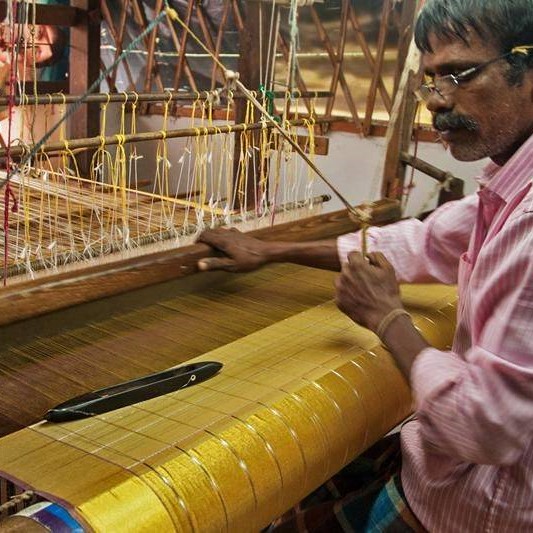
8. Sarnath
Sarnath, located near Varanasi in Uttar Pradesh, India, holds profound significance in Buddhism as the place where Gautama Buddha delivered his first sermon after attaining enlightenment. This serene and historically rich site, also known as Isipatana, is a pilgrimage destination for Buddhists worldwide.
Sarnath boasts an array of ancient monuments and archaeological treasures, including the Dhamek Stupa, a towering structure that marks the spot of Buddha’s sermon. The Mulagandhakuti Vihara, a Buddhist monastery, and the Ashoka Pillar, with its four lions, are other notable attractions.
Visitors can explore Sarnath’s well-preserved ruins, museums, and tranquil gardens, immersing themselves in the spiritual and historical essence of Buddhism. The site serves as a poignant reminder of Buddhism’s birthplace and continues to inspire seekers of inner peace and enlightenment.
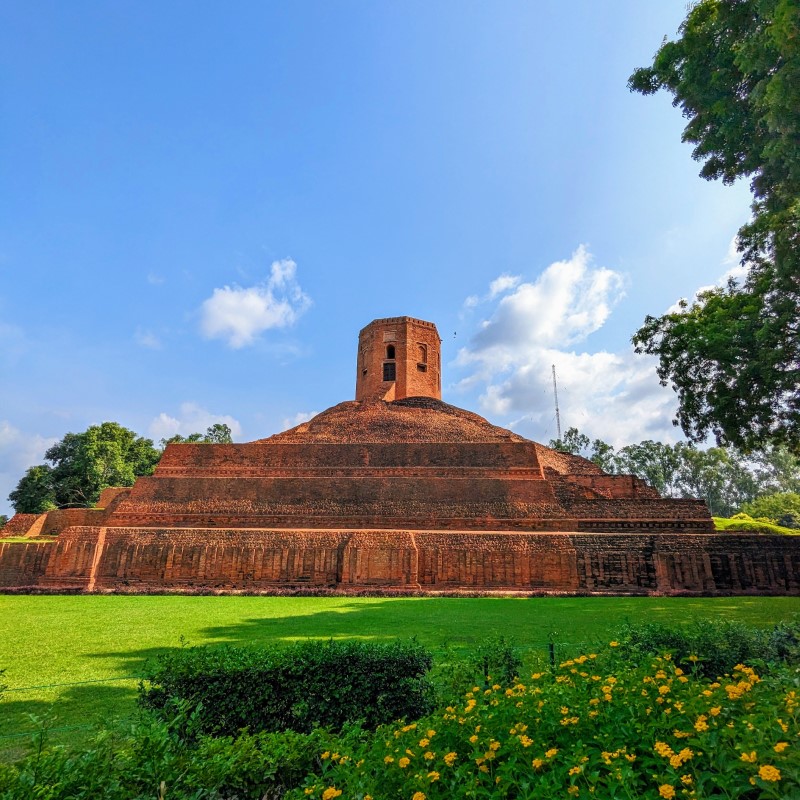
Top Accommodations in Varanasi
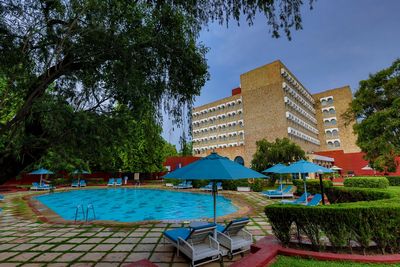
Taj Ganges
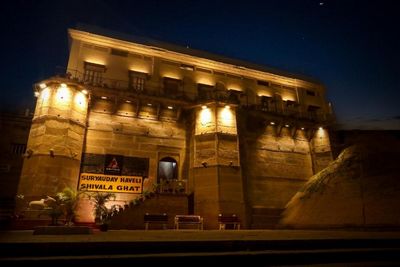
Suryauday Haveli

Brijrama Palace
...and more
Explore Around Varanasi
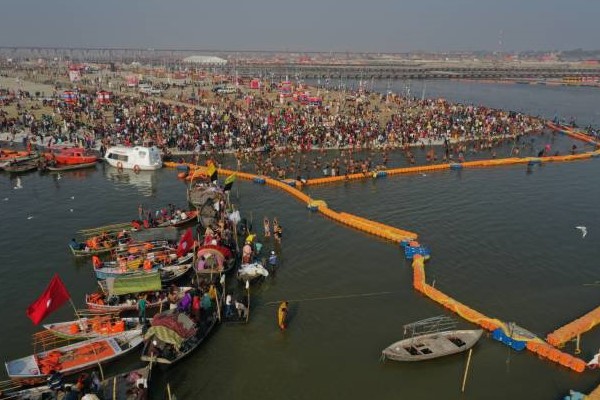
Prayagraj
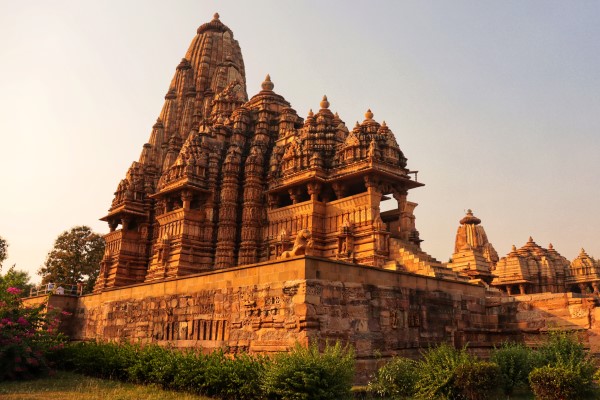
Khajuraho
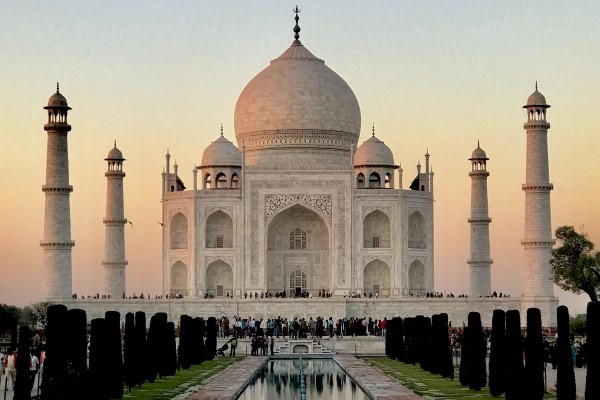
Agra
...and more
Celebrate in Varanasi
Best Time to Travel to Varanasi
The best time to explore the cultural wonders of Varanasi is during the winter months, spanning from November to February. As the city gracefully welcomes cooler temperatures, it sets the perfect backdrop for indulging in captivating cultural tours. Roaming through the narrow, bustling lanes adorned with ancient temples, one can witness the city’s vibrant tapestry of traditions and spirituality. The Ghats along the Ganges River come alive with rituals and ceremonies, offering a profound insight into Varanasi’s rich heritage. The crisp winter air enhances the experience, allowing travelers to comfortably navigate the city’s historical sites and absorb the essence of Varanasi’s cultural tapestry during this enchanting season.
Reaching Varanasi
Air : Travelling to Varanasi by air is a convenient option, with Lal Bahadur Shastri International Airport serving as the primary gateway. Located approximately 26 kilometers northwest of the city, the airport connects Varanasi to major Indian cities such as Delhi, Mumbai, Kolkata, and Jaipur. Domestic airlines operate regular flights, providing a quick and efficient way for both domestic and international travelers to reach the spiritual capital of India.
Train : Varanasi boasts a well-connected railway network, making train travel a popular choice for many visitors. Varanasi Junction (BSB) is a major railway station in the region, linking the city to various parts of the country. Numerous trains, including express and superfast services, connect Varanasi to major cities like Delhi, Kolkata, Mumbai, and Chennai. The scenic journey along the Ganges and the historical appeal of the railway station itself add to the allure of reaching Varanasi by train.
Road : For those who prefer road travel, Varanasi is accessible by a network of well-maintained highways and roads. The city is connected to major cities and towns in Uttar Pradesh and neighboring states through a robust road infrastructure. National Highway 2 (NH2) and National Highway 31 (NH31) are primary routes that connect Varanasi to cities like Allahabad, Agra, and Kanpur. State-run and private buses, as well as taxis and private vehicles, provide flexible options for travelers to explore the diverse landscapes on their journey to Varanasi. The road trip allows for a closer interaction with the cultural richness of the region.
GET A FREE QUOTE
Feel free to get in touch with our team of wildlife experts and receive a free quote for your next tiger safari holiday! You could also use this channel to request for a custom wildlife holiday package in India!
The Varanasi Gallery
Suggested Tours
India Classic Journeys
Discover the vibrant tapestry of Gujrat’s cultural heritage on a captivating tour. Immerse in traditional arts, music, and dance, as you explore historical landmarks and savor authentic Gujarati cuisine. Witness the grandeur of festivals and craftsmanship that define this unique region, making it a must-visit cultural destination.
Destinations Covered
- Ahemdabad
- Chotta Udaipur
- Posina
- Dasada
- Bhuj
- Gondal
India Classic Journeys
Experience the Heart of Rajasthan on a captivating tour through the royal state of India. Immerse yourself in the opulent heritage, explore majestic palaces, and vibrant bazaars. Witness the desert’s allure, enjoy authentic cuisine, and admire architectural wonders. This tour blends culture, history, and adventure, offering an unforgettable journey.
Destinations Covered
- Delhi
- Jaisalmer
- Jodhpur
- Udaipur
- Bundi
- jaipur
India Classic Journeys
Embark on the opulent Luxury Golden Triangle Tour in India, a captivating journey through Delhi, Agra, and Jaipur. Immerse in lavish comforts at iconic hotels, marvel at historical wonders like the Taj Mahal, and indulge in gourmet delights. A perfect blend of luxury, history, and cultural richness awaits.
Destinations Covered
- List Item #1
- List Item #1
- List Item #1
- List Item #1
- List Item #1
- List Item #1
Related Destinations
Frequently Asked Questions
ome of the must-visit cultural destinations in India during your cultural and wildlife tour include the Taj Mahal in Agra, Jaipur’s palaces and forts, Varanasi’s spiritual sites, and the cultural heritage of cities like Delhi and Udaipur. For wildlife enthusiasts, national parks like Ranthambore, Kaziranga, and Jim Corbett offer incredible biodiversity.
The ideal time for a cultural and wildlife tour in India depends on your preferences and the regions you plan to explore. Generally, the winter months (October to March) offer pleasant weather for most parts of India. However, wildlife enthusiasts may prefer visiting national parks during the cooler months, while cultural tours can be enjoyed year-round.
India boasts incredible wildlife diversity. During wildlife tours, you can spot iconic species like Bengal tigers, Indian elephants, Indian rhinoceroses, leopards, and various bird species. Each national park and region has its unique fauna and flora, making India a wildlife enthusiast’s paradise.
Yes, cultural and wildlife tours in India can be family-friendly. Many tour operators offer family-oriented itineraries that include educational activities and interactions with local communities. However, it’s essential to consider the age and interests of your children and choose destinations and activities accordingly.
Packing essentials for a cultural and wildlife tour in India include comfortable clothing suitable for the season and region you’re visiting, sturdy walking shoes, insect repellent, sunscreen, a hat, a reusable water bottle, a camera with extra batteries, any necessary medications, and a power bank for charging electronic devices. Additionally, it’s wise to check specific packing recommendations with your tour operator based on your itinerary.

